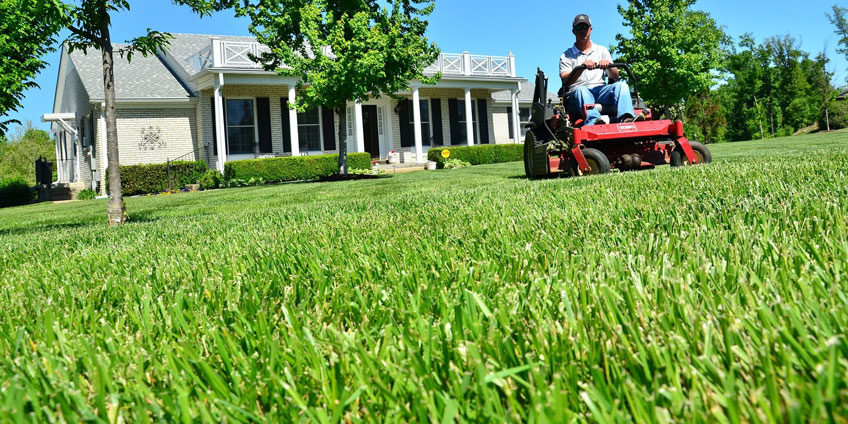A lawn’s surface appearance is only as good and healthy as its root system.
Newer lawns need concentrated root management to create a healthy sustainable turf. Treat the soils with root enhancing nutrients such as potassium and phosphorous to promote root growth in early spring and fall. It does not matter how green the grass blades are if the root system is dying.
GRASS
A well-developed root system will lead to a thicker, fuller lawn, so root fertilizers can be very important for grass. The root systems of turf grasses generally grow more vigorously during cooler weather in spring and fall, so Lawn Professionals should apply granulated root growth fertilizers in these months. Lawn care experts recommend fertilizing in April with a solid root growth fertilizer that also contains a weed control product to prepare lawns for summer, then fertilize again in late October with a 13-25-12 fertilizer, which is high in phosphorus, to encourage root growth over the winter. Do not use a product with high nitrogen content fertilizer in the fall. This would only promote diseases such as snow mold and would not promote quality root growth.
POTASSIUM FOR LAWN USE
Of the compounds you can use on your lawn, conventional bagged fertilizers are labeled with numbers, such as 10-10-10 or 5-20-10, indicating the ratio of the three macronutrients, N-P-K, in the mix. You might want one with the last number, which refers to potassium, larger than the others. Potassium helps lawns build the plant proteins that affect the macronutrient content of the plants in the lawn. Ideal amounts of potassium prompt grass to grow and mature faster, help them resist pest infestation and help them grow stronger. Potassium regulates plant growth, increases the sturdiness of deep roots. You can tell if your lawn is deficient in potassium by discovering grass blades, particularly older ones, with brown spots, yellow edges around them and brown or yellow veins.
THE ROLE OF IRON
Lawn grasses most heavily use the macronutrients nitrogen, phosphorus and potassium in normal growth and metabolic processes. Of these three primary nutrients, nitrogen is most important to keep a lawn growing fast and thick with an evenly green color. Several micronutrients are also needed in small amounts to maintain good plant growth. The iron molecule is the central atom in all green chlorophyll pigments in plants. Lack of nitrogen can cause new growth to look yellow or white, but a lack of iron prevents plants from even creating new chlorophyll and the lawn becomes pale green or yellow-green. Iron is an important nutrient for chlorophyll production, but iron amendments to soils should only be applied to turf that has a vigorous root system and thick blading.
IRON VS. NITOGEN
While both nitrogen and iron nutrients create green turf, you cannot substitute or eliminate one nutrient and expect the lawn to remain forever green. Iron treatments can mask an unhealthy lawn and be a procurer to lawn diseases. When growing, lawn grasses utilize large amounts of nitrogen to elongate their leaf blades, resulting in an increased need for mowing. If iron is deficient, the lawn can still look pale green or yellowish. Eliminating all nitrogen from lawn soil slows or stops growth, but iron molecules keeps extant grass blades green.

